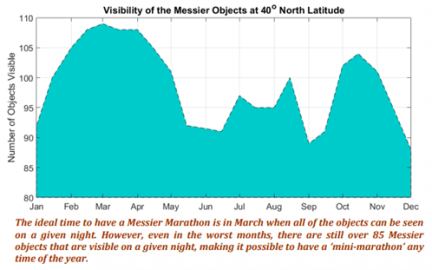Ever wondered what are those points of light in the night sky? Are planets visible to naked eyes? Can we see our neighbor spiral galaxy? Well, before starting with astronomy, let’s start with some basics.
Magnitude
It is the measure of the brightness of an astronomical object. A star with a magnitude of +1 is 2.5 times more bright than a star at +2. The brighter the object appears, the lower is the value of its magnitude. Sun has a magnitude of -27 and Moon -12. Jupiter and Venus shine at -3 to -2.
Bortle Scale
It is a nine-level numeric scale that measures the night sky brightness of a particular location. It is graded from 1 to 9, 1 being perfectly dark sky – with the milky-way band clearly visible and 9 being completely light-polluted sky. Class 9 sky is something you will see from the city center. Smaller the value – darker the sky. Naked eye limiting magnitude (NELM, i.e. dimmest magnitude of an object visible to naked eyes) for all 9 class of sky is as follows:
- Class 1, Truly dark sky, NELM = 8.0; Milky-way band, interplanetary dust is clearly visible.
- Class 2, Typical dark sky, NELM = 7.5;
- Class 3, Rural sky, NELM = 7.0
- Class 4, Rural/Suburban transition, NELM = 6.5
- Class 5, Suburban, NELM = 6.0
- Class 6, Bright suburban, NELM = 5.5; Andromeda galaxy is barely visible.
- Class 7, Suburban/Urban transition, NELM = 5.0; Milky-way is invisible.
- Class 8, City sky, NELM = 4.5
- Class 9, Inner city sky, NELM = 4.0; Only moon and planets are visible.
What happens in class 1 sky?
- Venus and Jupiter affect dark adaptation.
- Andromeda appears bright and clear to the naked eyes.
- Constellations are hard to make out, due to the high number of stars visible.
- Milky-way is highly structured.
- Interplanetary dust is visible due to reflected sunlight.
Choosing time and place
Your location is a factor in deciding how bright an object will appear to you. Here are some quick tips:
- A place as far from artificial light as possible. A half an hour drive away from the city will help you.
- Night near the new moon. Moon is the largest source of light pollution in the night sky.
- Spring, winter, and autumn. October to March.
- Midnight. 00:00 to 02:00 am is the best time for stargazing; you will get the darkest sky at that time for a given location.

The above image shows the number of Messier objects visible throughout the year.
Prominent targets
- Planets: Mercury, Venus, Mars, Jupiter, and Saturn are easily visible to naked eyes. Uranus and Neptune will be visible through a pair of binoculars. Pluto would need a 10-inch reflector to appears like a faint star.
- Deep-sky objects: Orion nebula, Andromeda galaxy and a handful of other deep sky objects are also visible to naked eyes. A small telescope or a binocular will give you a pretty detailed view.
- Meteor Shower: Many periodic yearly meteor showers happen every year. At its peak, you can observe as many as 100 shooting stars in an hour. Perseid, Orionid, Leonid, Geminid, and Ursid are few you can witness in the second half of 2021.
- Comets: You have probably heard of NEOWISE. It came from the outermost part of our solar system – Oort Cloud – Comets originating from here are long-period comets (1000s of years for an orbit). Other comets originate from Kuiper Belt (relatively close to Sun) – they have smaller orbits (100s of years or less) – Halley’s comet is a short-period comet.
- Satellites: You can also view satellites like – International Space Station, Hubble Space Telescope, and Starlink.
Apps and Softwares that I use for planning my stargazing session
- Stellarium: Free open source software. It shows a realistic sky in 3D, just like what you see with the naked eye, binoculars or a telescope. Available for Linux, Mac OS, Windows and Android.
- DSO planner: Sky map with up-to +16 magnitude stars. Great for star hopping using your binoculars/telescope. Available for Android.
- Heavens-above: For accurate predictions of satellite passes. Available for Android.
More articles are on the way…
~AK

